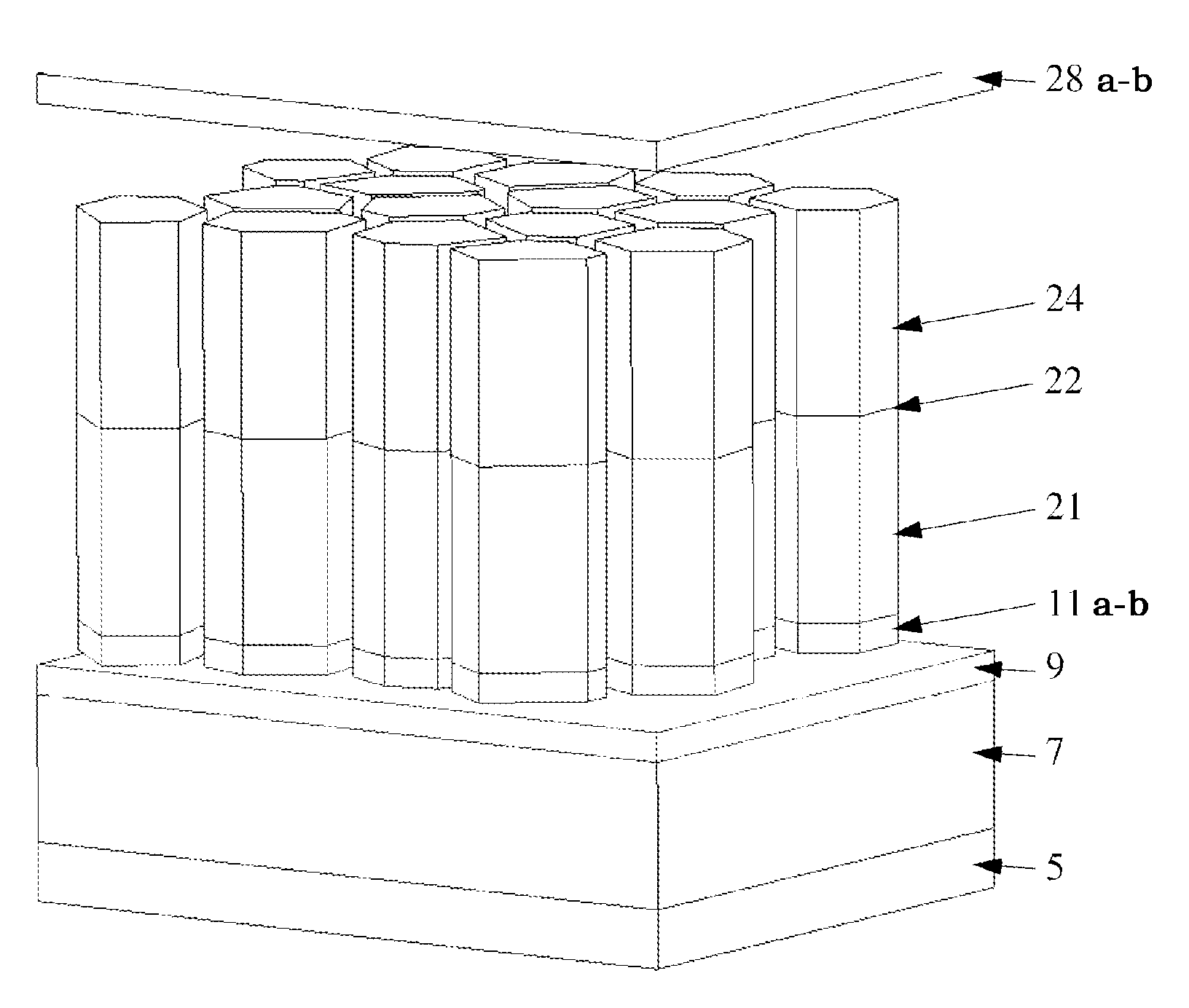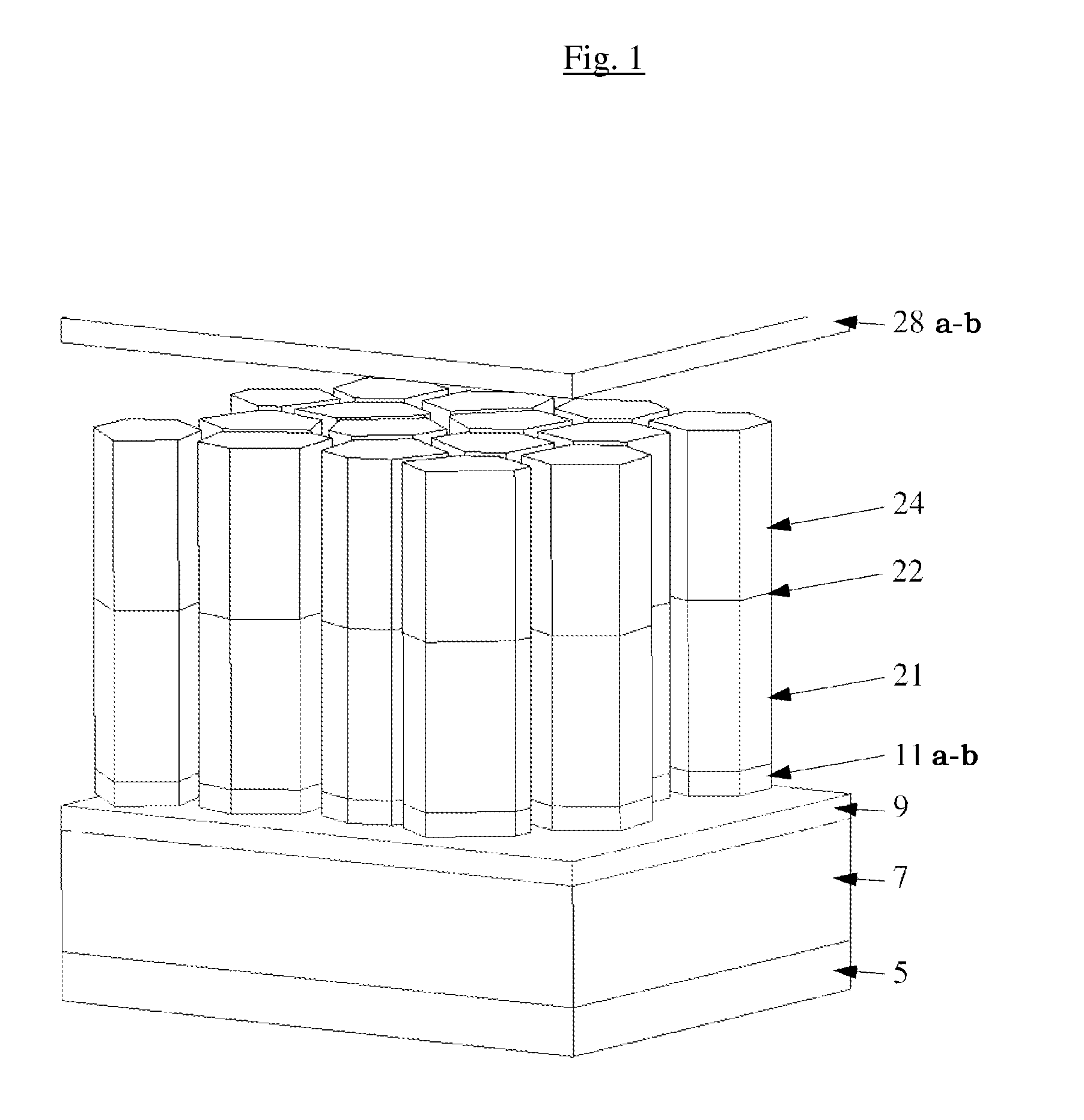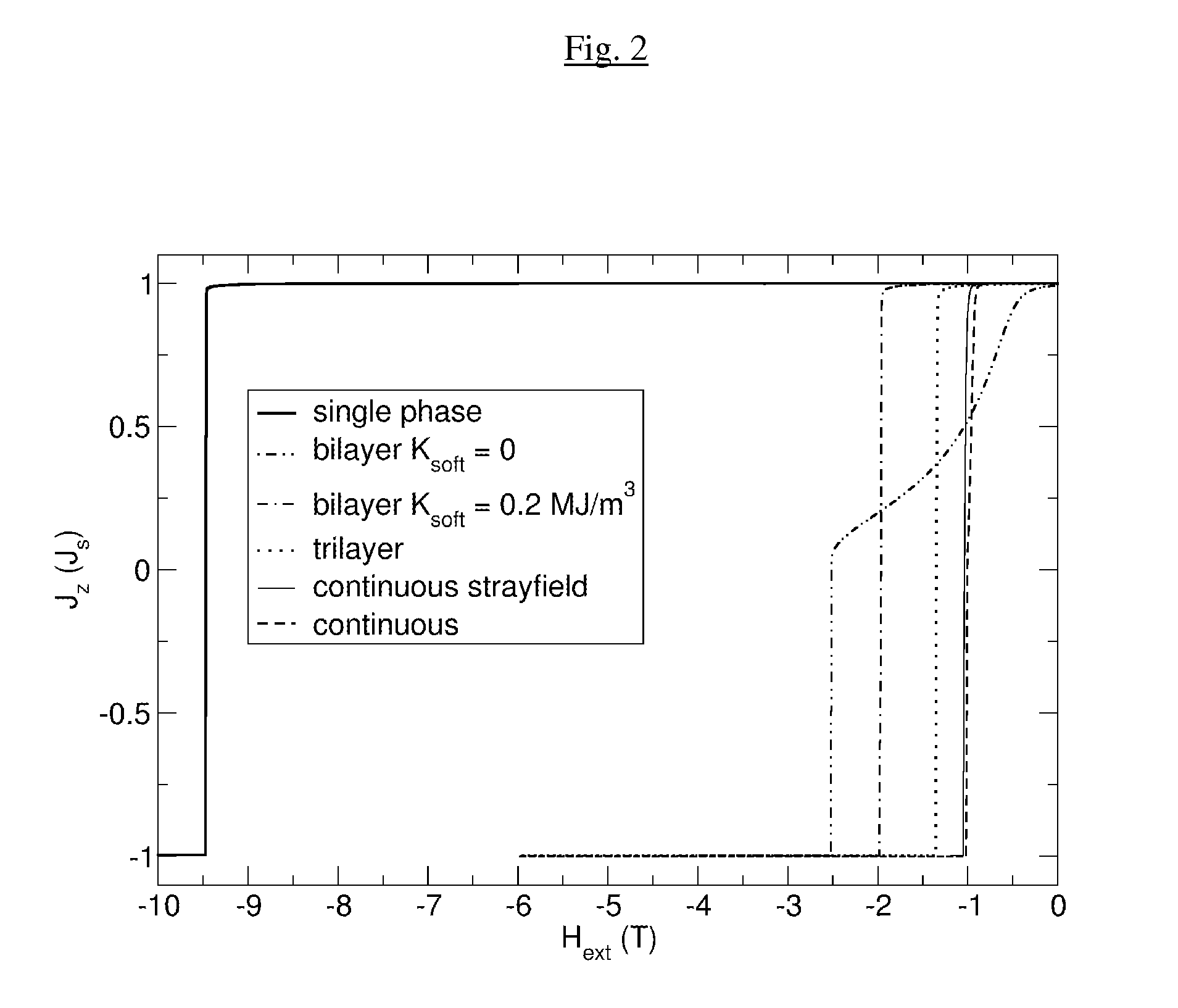Multilayer Exchange Spring Recording Media
a multi-layer exchange spring and recording media technology, applied in the field of magnetic recording media, can solve the problems of reducing the thermal stability of the structure, not being written with existing recording heads, and unfavorable increase of coercivity hsub>c/sub>, so as to achieve high thermal stability and remove the proportionality of energy barriers
- Summary
- Abstract
- Description
- Claims
- Application Information
AI Technical Summary
Benefits of technology
Problems solved by technology
Method used
Image
Examples
Embodiment Construction
[0024]FIG. 1 illustrates the cross sectional view of the layer structure of an existing disk of recording medium. The disk includes a substrate 5, a soft magnetic underlayer 7, an interlayer 9, an optional seed layer 11a and underlayer 11b, a hard magnetic storage layer 24, strongly exchange coupled to a nucleation layer 21, an optional coupling layer 22, a protective layer 28a, and a lubricant layer 28b. Although the hard magnetic storage layer is shown on top of the nucleation layer, the order of the layers can also be reversed.
[0025]Substrate 5 may be made of any suitable material such as ceramic glass, amorphous glass, or NiP plated AlMg or an AlMg alloy base with a NiP surface coating.
[0026]Soft magnetic underlayer 7 is deposited on substrate 5. soft magnetic underlayer 7 may be made of any suitable material such as NiFe, CoNbB, FeAlSi, CoFeB, FeTaN, FeTaC, FeCoB, FeSiO, FeAlSi, FeTaN, FeN, CoFe, CoZr, CoFeB, CoZrNb, NiFeNb or equivalents. Soft magnetic underlayer 7 may have a ...
PUM
| Property | Measurement | Unit |
|---|---|---|
| thickness | aaaaa | aaaaa |
| diameter | aaaaa | aaaaa |
| diameter | aaaaa | aaaaa |
Abstract
Description
Claims
Application Information
 Login to View More
Login to View More - R&D
- Intellectual Property
- Life Sciences
- Materials
- Tech Scout
- Unparalleled Data Quality
- Higher Quality Content
- 60% Fewer Hallucinations
Browse by: Latest US Patents, China's latest patents, Technical Efficacy Thesaurus, Application Domain, Technology Topic, Popular Technical Reports.
© 2025 PatSnap. All rights reserved.Legal|Privacy policy|Modern Slavery Act Transparency Statement|Sitemap|About US| Contact US: help@patsnap.com



